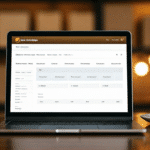15 Ecommerce Pricing Strategies to Maximize Your Profits
As an ecommerce business owner, setting the right price for your products or services is crucial for maximizing your profits and staying competitive. In this article, we’ll explore 15 ecommerce pricing strategies that can help you achieve these goals, so let’s get started.
Understanding Your Market
Understand Your Target Audience
Before setting your prices, it’s essential to understand your target audience and their buying habits. Conducting comprehensive market research can provide insights into customer preferences, their willingness to pay for your products, and their price sensitivity. According to a Statista report, understanding customer behavior can enhance pricing strategies by up to 30%.
One effective method to understand your target audience is by creating buyer personas. These are fictional representations of your ideal customers, based on real data and research. Detailed personas help in understanding customer motivations, pain points, and buying behaviors, allowing you to tailor your pricing strategy to meet specific needs and preferences.
Analyze Competitor Pricing Strategies
Conducting a competitive analysis is vital to identify your competitors’ pricing strategies, including their profit margins, promotions, discounts, and value propositions. By analyzing their strengths and weaknesses, you can position your brand as a superior alternative, attracting more customers and increasing your market share. Additionally, learning from competitors' pricing strategies can help you optimize your own.
Consider using tools like SEMrush or Compete to gather competitive pricing data and stay updated with market trends.
Cost and Margin Analysis
Determine Your Product Costs
Accurately calculating your product costs is fundamental. This includes manufacturing or production costs, materials, labor, shipping, storage, and marketing expenses. Ensuring that your prices cover all these costs while allowing a profit margin is essential for sustainability. If your costs are too high, consider tweaking your product design, negotiating with suppliers, or outsourcing certain tasks to reduce expenses.
Regularly reviewing and updating your product costs is crucial as your business evolves. Scaling production or expanding your product line can shift costs, necessitating adjustments to maintain competitive and profitable pricing.
Calculate Your Margins and Markup
Once you’ve determined your product costs, calculating your profit margins and markup is the next step. Profit margin is the percentage of revenue remaining after deducting all costs, while markup is the percentage added to your product costs to set your selling price.
For instance, if your product costs $50 and you want a 20% profit margin, your selling price should be $62.50. Balancing profit margins and markup is crucial to meet both business goals and customer budgets.
Consider reducing costs to increase profit margins by negotiating better prices with suppliers or finding more efficient production methods. Alternatively, you can cautiously increase prices if your product is in high demand.
Effective Pricing Strategies
Offer Discounts and Promotions
Offering discounts and promotions can attract new customers and boost sales. It creates a sense of urgency and incentivizes customers to purchase more. However, it's essential to align your promotions with business goals, such as clearing inventory, increasing customer loyalty, or boosting profits, without significantly eroding your margins.
- Email Marketing Campaigns: Sending personalized emails with exclusive discounts can increase customer loyalty and encourage repeat purchases.
- Social Media Promotions: Creating posts that highlight promotions can enhance brand awareness and attract new customers through shares and interactions.
According to Forbes, personalized promotions can increase conversion rates by up to 50%.
Implement Dynamic Pricing Strategies
Dynamic pricing adjusts your prices based on real-time market demand, inventory levels, and other factors. This strategy allows you to optimize prices for maximum profitability while staying competitive and meeting customer needs. Common dynamic pricing techniques include:
- Surge Pricing: Increasing prices during high demand periods.
- Time-Based Pricing: Adjusting prices based on time factors, such as seasons or time of day.
- Demand-Driven Pricing: Setting prices according to customer demand and willingness to pay.
Tools like PriceMoov or Zonos can help implement dynamic pricing effectively.
Consider Value-Based Pricing
Value-based pricing sets prices based on the perceived value your products provide to customers, rather than solely on cost. This strategy requires a deep understanding of your customers’ needs and preferences, allowing you to charge premium prices for high-value products.
One key benefit of value-based pricing is the ability to build stronger customer relationships. When customers feel that the price reflects the value they receive, it enhances satisfaction and loyalty, leading to repeat business and positive word-of-mouth.
Research from Harvard Business Review indicates that companies using value-based pricing see an average revenue increase of 7-10%.
Use Psychological Pricing Techniques
Psychological pricing leverages customers’ emotions and perceptions to influence their buying decisions. Common techniques include:
- Odd Pricing: Setting prices that end in odd numbers, such as $9.99 instead of $10, making prices appear lower.
- Anchor Pricing: Placing a high-priced item next to a lower-priced one to make the latter seem more affordable.
- Tiered Pricing: Offering different pricing tiers for various levels of service or product features, allowing customers to choose based on their needs and budget.
According to a study by Psychology Today, psychological pricing can increase sales by up to 30%.
Optimizing Sales and Bundling
Optimize Your Product Bundling Strategy
Product bundling involves offering a set of products or services at a discounted price compared to purchasing them separately. This strategy can increase sales and customer loyalty by providing convenience and savings. To design effective bundles:
- Understand Customer Preferences: Analyze buying habits to create bundles that meet customer needs.
- Focus on Profit Margins: Bundle products with higher profit margins to maximize revenue.
- Offer Multiple Bundle Levels: Cater to different customer segments by providing various bundle options based on needs and budgets.
Research from Shopify shows that effective bundling can increase average order value by up to 20%.
Monitoring and Analytics
Monitor Your Pricing Strategy Regularly
Effective ecommerce pricing is an ongoing process that requires constant monitoring and refinement. Regularly reviewing your pricing strategy helps identify areas for improvement, detect changes in market demand, and adjust prices accordingly. Utilizing analytics tools to track sales, revenue, and profit margins enables data-driven decisions.
Additionally, keeping an eye on competitors’ pricing ensures that your prices remain competitive and attractive to customers. Tools like Google Analytics and Tableau can aid in monitoring and analyzing pricing performance.
Leverage Data Analytics to Improve Your Pricing Strategy
Data analytics provides valuable insights into customer behavior, competitor pricing strategies, market trends, and future demand forecasting. By integrating analytics tools into your ecommerce platform, you can optimize prices, increase profits, and enhance customer satisfaction.
Key benefits include:
- Personalized Pricing: Customize prices based on individual customer preferences, purchase history, and willingness to pay.
- Real-Time Price Adjustments: Automatically adjust prices based on real-time data such as market conditions and inventory levels.
According to McKinsey & Company, businesses utilizing data-driven pricing strategies see a 2-5% increase in profitability.
Enhancing Customer Experience
Explore Different Payment Options for Customers
Offering a variety of convenient and secure payment options can enhance customer satisfaction and trust, ultimately improving conversion rates. Consider providing multiple payment methods such as credit cards, PayPal, online banking, and mobile payments to cater to diverse customer preferences.
Additionally, offering installment plans or subscription programs can incentivize customers to make larger purchases. Implementing a guest checkout option simplifies the purchasing process, reducing cart abandonment and increasing sales.
Ensuring the security of your payment process is paramount. Display trust badges and security seals prominently on your website to reassure customers that their personal and financial information is safe. Utilizing reputable third-party payment processors that specialize in security and fraud prevention can further enhance trust.
Evaluate the Impact of Shipping Costs on Your Pricing Strategy
Shipping costs can significantly influence your pricing strategy and customer expectations. It’s crucial to evaluate how shipping costs affect your profit margins and find a balance between offering free shipping and charging reasonable fees. Optimizing your shipping processes to reduce expenses can also help maintain healthy profit margins.
Consider offering free shipping for orders above a certain value or for loyalty program members to encourage larger purchases and repeat business. According to a study by nChannel, 75% of customers expect free shipping, and those who receive it are more likely to return.
Conclusion: Implementing Effective Ecommerce Pricing Strategies
Effective ecommerce pricing strategies involve a comprehensive approach that includes understanding your target audience, accurately calculating costs and margins, analyzing competitors, offering strategic discounts and promotions, implementing dynamic and value-based pricing, optimizing product bundling, utilizing psychological pricing techniques, continuously monitoring and leveraging data analytics, enhancing payment options, and evaluating shipping costs. By integrating these strategies, you can optimize your ecommerce pricing, maximize your profits, and provide exceptional value and satisfaction to your customers.




















